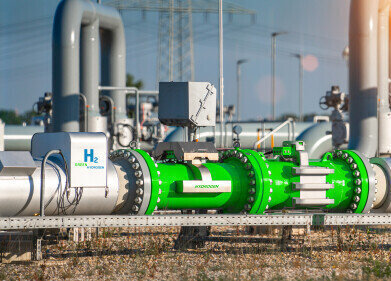Biofuel industry news
How Do LMO Batteries Work?
Oct 21 2022
Thanks to a unique three-dimensional spinel structure, Lithium Manganese Oxide (LMO) batteries boast high thermal stability and excellent current handling. The three-dimensional structure accelerates the flow of ions, which lowers internal resistance and makes LMO batteries well-suited to high rate applications.
As well as a fast discharge and charge rate, the accelerated flow of ions helps to regulate current and prevent the build-up of heat in the cell. Ultimately, LMO batteries have the capacity to deliver a large amount of power in a short period of time.
These characteristics make LMO batteries an excellent choice for power tools, as well as electric vehicles. LMO batteries are also used in medical instruments, including surgical tools, automatic external defibrillators, infusion pumps and electrical stimulation devices. For example, medical power tool manufacturer BioAccess used LMO batteries to reduce the weight of a surgical drill model, without affecting power or performance.
The benefits of manganese dioxide
LMO batteries feature a cathode made from manganese dioxide. This offers a range of benefits, which we explore in more detail below:
-
Great thermal stability
The use of manganese dioxide creates a highly stable cell environment. This gives LMO batteries excellent safety credentials.
-
Earth-abundant
Manganese dioxide is a readily available inorganic compound. While it does need to be purified when used to manufacture LMO batteries, manganese dioxide is earth-abundant and relatively easy to source.
-
Affordable
Unlike other raw materials such as cobalt, manganese dioxide is affordable. This makes it popular with battery manufacturers looking to keep costs as low as possible.
-
Nontoxic
Many lithium ion batteries feature highly toxic chemicals such as cobalt. These can seep into the environment and contaminate soil, groundwater and marine ecosystems. In comparison, manganese dioxide is a nontoxic metal oxide. This makes it popular with eco-conscious battery manufacturers.
The environmental impact of batteries
The environmental impact of batteries is complex and some critics maintaining the cons outweigh the pros. Lithium mining is front and centre, with both open pit mines and underground brine reservoirs demanding a huge amount of energy and water. Other concerns include the pollution of water sources, as well as social problems in countries like Argentina where profits are often prioritised over the interests of local communities.
Until the issues surrounding lithium batteries can be addressed, demand for combustion engines will endure. This means the market for grease and lubricating oils will also remain strong. Want to know more about the industry? Don’t miss ‘NLGI Publishes updated grease handbook: a must have for producers, marketers and users of grease’.
Digital Edition
PIN 26.1 Feb/Mar 2025
March 2025
Analytical Instrumentation - Elemental Analysis for Quality and Process Control at Refineries, for Lubricants and Wear Metals in Engine Oils - Synthetic Lubricants: New Developments - Scaling...
View all digital editions
Events
Apr 08 2025 Birmingham, UK
Apr 08 2025 Kielce, Poland
Apr 08 2025 Ravenna, Italy
Apr 08 2025 Southampton, UK
Apr 08 2025 London, UK



















